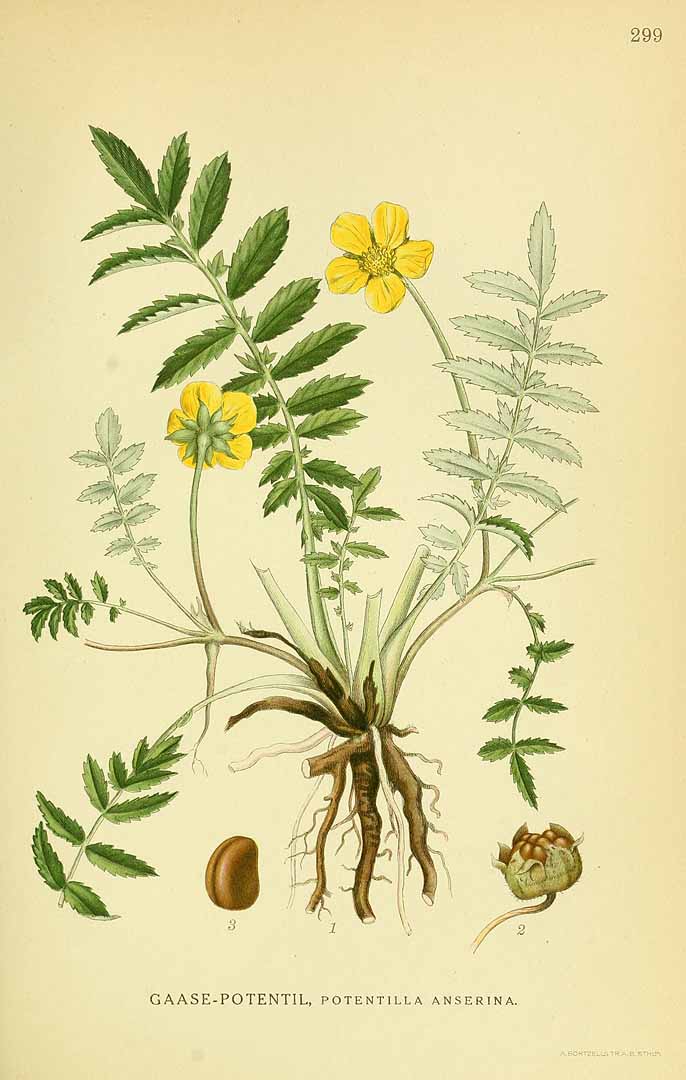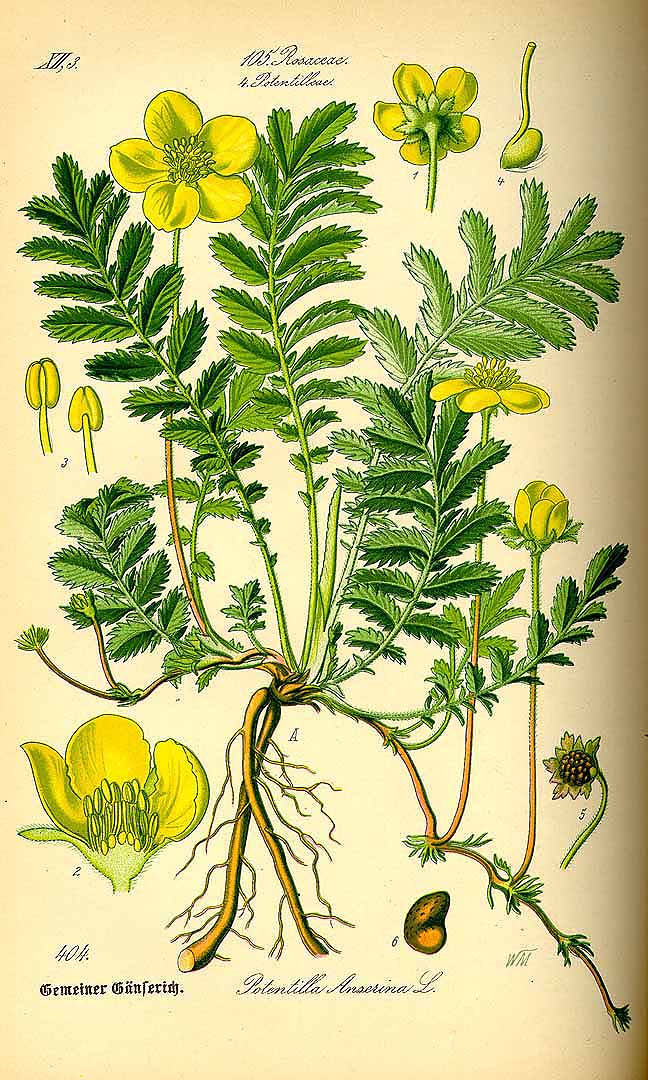! Nouveau site ici !
Vita > Plantae > Magnoliophyta > Magnoliopsida > Rosales >
Rosaceae > Potentilla
Potentilla anserina
(Potentille ansérine)



 | *** - ***
| *** - ***
Vita > Plantae > Magnoliophyta > Magnoliopsida > Rosales >
Rosaceae > Potentilla
Potentilla anserina
(Potentille ansérine)

Une herbe. Elle continue de croître d'année en année. Il atteint 30 cm de haut. Les racines se prolongent vers le bas. Il peut avoir des tubercules de racine. Les feuilles près de la racine ont 6 à 11 pair... (traduction automatique)
→suite
⬀
Le  donne accès au menu
donne accès au menu (c'est votre point de repère) 😊 ;
En dessous vous avez la classification, à partir de la vie (Vita, premier rang) jusqu'à la classe au dessus de la plante, dont vous trouvez ensuite le nom scientifique/botanique (latin) puis le nom commun (français), le cas échéant ;
C'est aussi un lien vers la fiche complète (tout comme la ✖, en bas à droite, et le +, en dessous de la description) ;
Vient alors l'illustration (ou ce qui la remplace, en attendant), la comestibilité :
Et en bas
⬂





